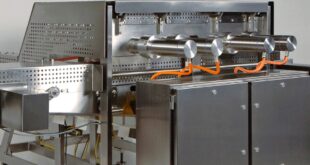Jason Harryman explores how hospital management teams can opt for generators with a high power density as a way of future-proofing their standby power needs
Whether it is a storm, a flood or a general blackout, hospitals must be able to sustain power.
To future-proof their stand-by power needs, hospitals often upgrade their stand-by generator systems.
During a diesel generator upgrade, as part of a hospital refurbishment or expansion, it can be tough to meet the requirements of the space, particularly if the engine room is small or difficult to access.
To achieve a good balance between power output and available space, hospital management teams can opt for generators with a high power density.
Specifying a system
Although the generator must be able to cover 100% of hospital power in the case of an outage, future-proofing isn’t as simple as just buying bigger generators to meet extra capacity.
If hospital teams over-size their system by choosing a generator with a higher rating than needed, the units will take up more space and have a higher maintenance and servicing requirement.
Larger units also lead to increased capital costs, something which is increasingly hard to justify.
At the same time, smaller units may not provide enough power, leaving hospital procurement teams with a tough decision.
Engine manufacturers have been working to decrease the size of their units, while maintaining the same power resilience. This results in generators with higher power density — a measurement for the amount of power a piece of equipment produces for its size.
While a standard hospital generator used to offer 2.5MVA standby, convention now is usually above 3.0MVA.
One example is the Cat 3516, which was originally rated at 1650kVA, but can now achieve over 3,000 kVA, all from a very similar footprint.
Aside from power density, using compact generators means hospitals also benefit from the need for less ancillary equipment and generators that are cheaper to transport, install and maintain.
Power density in practice
As an example, Finning has provided Guy’s Hospital in London with three Cat C175-20 generator sets with an output of 3200ekW, the highest output available from a single high-speed generator set in the UK.
The system will go on to provide a combined 9600ekW of reliable, mission critical standby power.
Talking about the project, David Porter, Head of Compliance at Guy’s and St Thomas’ NHS Foundation Trust said: “Due to the spatial constraints, we considered three different sizes of engines and appointed Finning, which offered the C175-20, because of its compact size and high power output. The small footprint of the C175-20 means that the new units can be housed within the existing generator rooms without any major building modifications.”
To reduce the risk of the power going out, hospitals may think that a more power dense generator means fewer units are required, and therefore fewer points of failure. However, demand for standby power has increased so significantly over the years, numbers have actually increased.
The key to achieving a low cost of ownership is to optimise the generator to match the required needs.
Jason Harryman is UK Sales and Business Development Manager for Electric Power at Finning UK & Ireland.
 Engineer News Network The ultimate online news and information resource for today’s engineer
Engineer News Network The ultimate online news and information resource for today’s engineer





